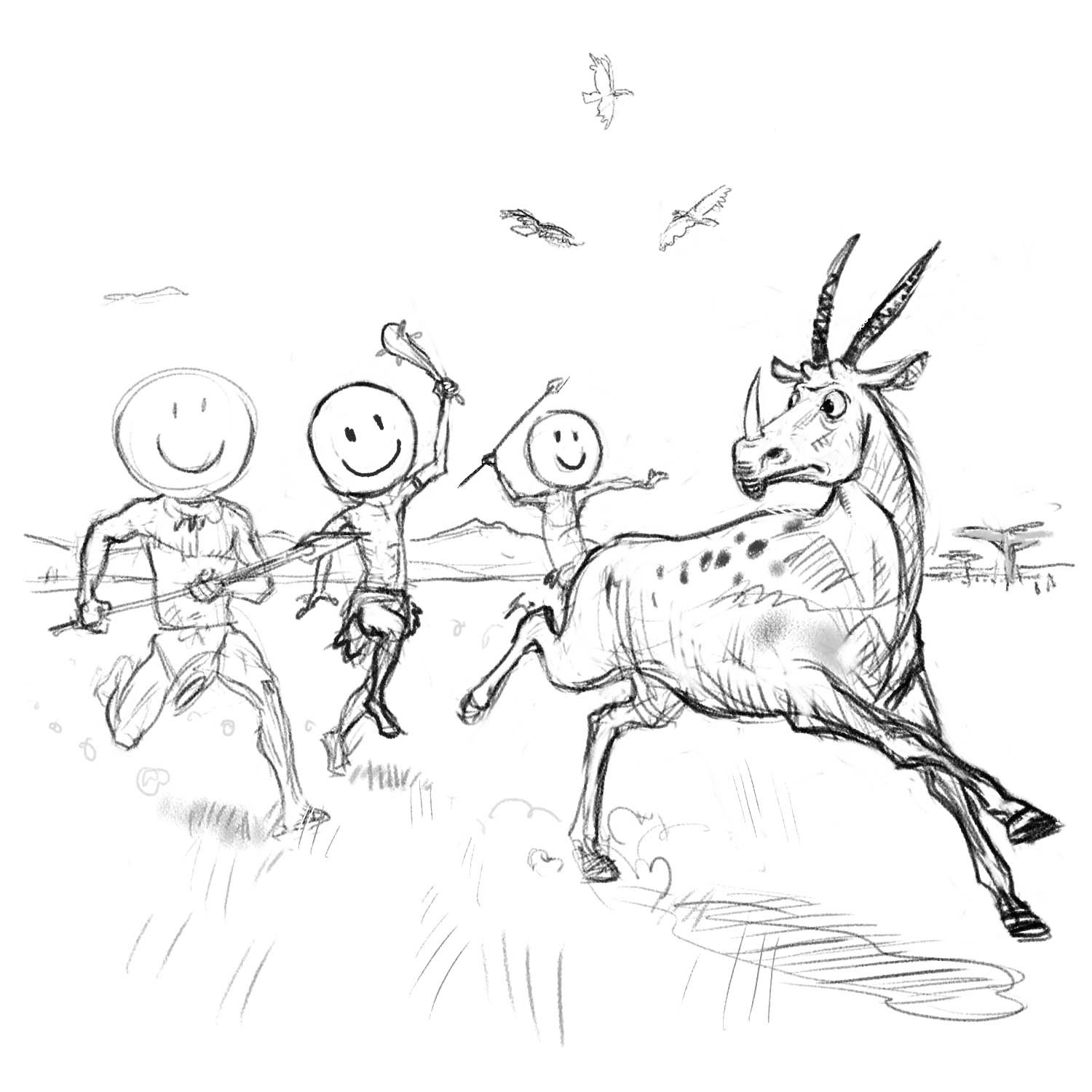Explaining "Runner's High"

Illustration by Matt Collins.
New findings may explain where the infamous “runner’s high” came from.
Experts have long hypothesized that running played a major role in human evolution based on our physiology: We have strong necks to hold our heads upright, long toes for locomotion and large gluteal muscles to provide running power. Plus, our body’s ability to naturally cool itself through sweating reigns supreme over other species’ methods.
A recent study in the Journal of Experimental Biology looked deeper into the neurobiological side of why we were born to run. The “runner’s high,” that elusive post-workout blast of positivity, may have originally adapted to encourage our ancestors to run for their food.
To test their theory, researchers at the University of Arizona decided to measure endocanabinoids (brain chemicals in the reward regions of the brain) in humans, dogs and ferrets before and after treadmill tests.
“One of the reasons we started looking at the endocanabinoid system as a possible culprit in creating rewards from exercise is because some of the emotions people say they feel from marijuana highs match the descriptions after exercise,” says David Raichlen, an anthropologist and lead author of the study.
Following a brisk run, they discovered that the endocanabinoid levels in humans and dogs rose significantly, creating a “high” feeling, but did not see such an increase in ferrets—not surprising given that, unlike humans and other mammals, the ferret is not built for long-distance running. Raichlen explains the high reaction by suggesting that our bodies reward us with positive feelings when we engage in activities that promote health and survival.
“From an evolutionary perspective, it’s a way natural selection actually encourages you to engage in a behavior that’ll benefit you in the long run,” Raichlen says. “These positive feelings motivate you to exercise and reinforce the behavior.”
So how hard and how long do you have to go?
The verdict is still out. Experts hypothesize that the activity likely has to be at least 20 minutes at a moderate intensity to elicit the so-called high. Existing research has shown both moderate intensity running and cycling bring on such sensations, but it is not known if other activities offer a similar boost in mood. “Some have suggested there’s a mechanical trigger that’s necessary, and biology probably plays a role too,” Raichlen says. “We are also interested in finding out if your level of fitness matters.”